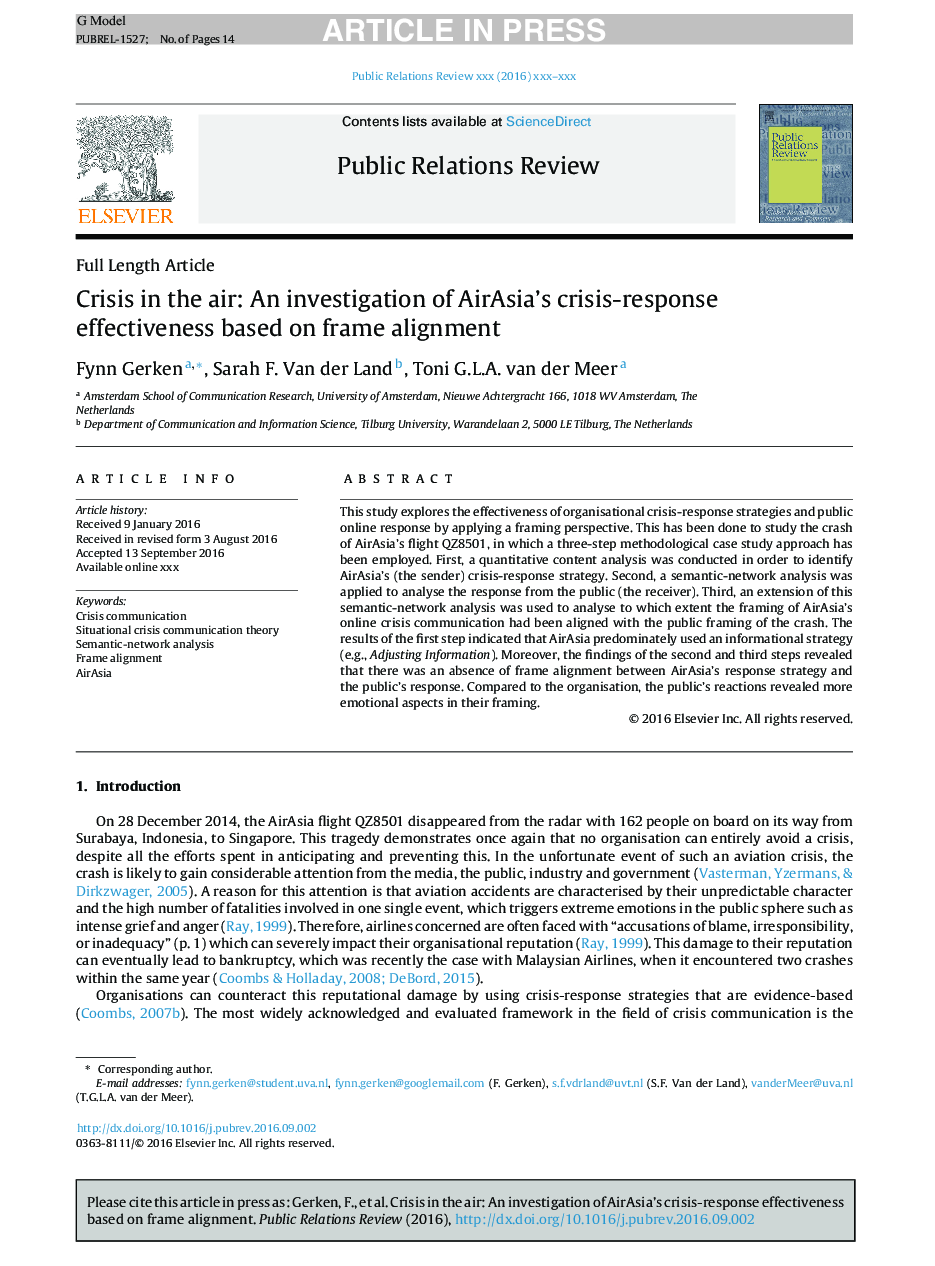| Article ID | Journal | Published Year | Pages | File Type |
|---|---|---|---|---|
| 4761843 | Public Relations Review | 2016 | 14 Pages |
Abstract
This study explores the effectiveness of organisational crisis-response strategies and public online response by applying a framing perspective. This has been done to study the crash of AirAsia's flight QZ8501, in which a three-step methodological case study approach has been employed. First, a quantitative content analysis was conducted in order to identify AirAsia's (the sender) crisis-response strategy. Second, a semantic-network analysis was applied to analyse the response from the public (the receiver). Third, an extension of this semantic-network analysis was used to analyse to which extent the framing of AirAsia's online crisis communication had been aligned with the public framing of the crash. The results of the first step indicated that AirAsia predominately used an informational strategy (e.g., Adjusting Information). Moreover, the findings of the second and third steps revealed that there was an absence of frame alignment between AirAsia's response strategy and the public's response. Compared to the organisation, the public's reactions revealed more emotional aspects in their framing.
Related Topics
Social Sciences and Humanities
Business, Management and Accounting
Marketing
Authors
Fynn Gerken, Sarah F. Van der Land, Toni G.L.A. van der Meer,
